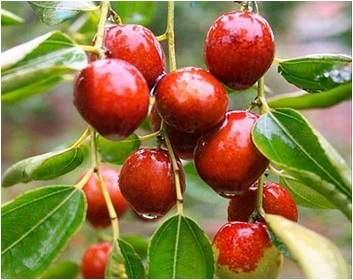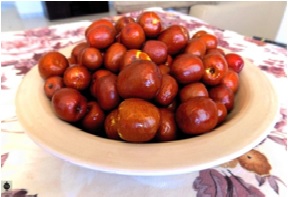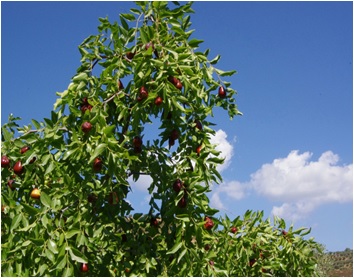ENTER A PRODUCT: Submission #41
Secondary tabs
Submission information
Submission Number: 41
Submission ID: 47
Submission UUID: ea637852-3d64-4307-98c6-0851d8ed12cd
Submission URI: /slowfood/form/segnala-un-prodotto-bk1
Created: Wed, 03/22/2023 - 13:19
Completed: Wed, 03/22/2023 - 13:23
Changed: Tue, 09/19/2023 - 13:00
Remote IP address: (unknown)
Submitted by: admin-form
Language: English
Is draft: No
Current page: Complete
Webform: ENTER A PRODUCT
| Product name | Anneb | ||
|---|---|---|---|
| Scientific name (for reporting plants, animal breeds, insects, etc.) | Ziziphus jujuba | ||
| Category |
|
||
| Geographic area | Geographic area: Sfax, Tunisia Latitude: 34.739822 Longitude: 10.7600196 Location: 34.739822,10.76002 Formatted Address: Sfax, Tunisia Locality: Sfax State/Province: Governatorato di Sfax Country: Tunisia Country Code: TN |
||
| Product description | Ziziphus jujube, locally called Anneb, belongs to the Rhamnaceae family and is mainly cultivated in private gardens in Tunisia in the areas of Mahdia, Ariana and Sfax. The tree reaches a height of 8 metres and a diameter of 50 to 60 cm and is found in Tunisia in three different species: Ziziphus lotus (Sedra), Ziziphus jujuba Miller (i.e. Anneb), and Ziziphus Spina-Christi (Nebga). The best known variety remains Ziziphus jujube with fruits the size of an olive. |
||
| Gastronomic use | The fruits, leaves and roots of the tree used both in cosmetics purposes The fruits, leaves and roots of Ziziphus jujuba are very versatile and have numerous cosmetic and medicinal uses due to their many nutritional benefits, polyphenols and vitamins contained in the extracted oils, such as their richness in fruit sugars (glucose and fructose), minerals (copper) and various proteins. Everything about the Ziziphus jujuba plant has a use. The seeds, in powder form, are used to aid digestion, while the essential oil finds its use in cosmetics. The dried fruits are traditionally used as immune system boosters to prevent the onset of various diseases. The leaves, on the other hand, are used in the production of a tea with beneficial and relaxing properties. The wood of the tree is also much sought after in the production of furniture and the ash generated by burning the wood is used against snake bites. The roots are famous for their officinal use, useful for relieving stomach pains. |
||
| Relationship with the local ecosystem and processing | Its wide distribution is ensured by its marked adaptability to climatic conditions, its wide tolerance of drought conditions, high atmospheric temperatures and even altitudes of up to 1550 m. Despite its properties, this species is undergoing increasing degradation due to factors linked to the increase in intensive agriculture. In addition to this, the characteristic sexual reproduction poses a great difficulty for the spread and use of this crop. The plant is also particularly susceptible to certain pests, especially the fruit fly (Ceratitis capitata) during periods of particular drought. Diseases such as powdery mildew cause the youngest fruits and leaves to fall off, while viral diseases deform the branches. Harvesting and storage of the fruit is also a major problem: it is very common for fruit to be damaged during harvest or transport. From a reproductive point of view, on the other hand, the phenological phases of this variety vary depending on the season, the place where it grows and the ecotype. The tree begins its growth in late spring, sprouting in March, with foliage in April. Leaf fall occurs at the beginning of the autumn season, flowering between May and June, fruiting starts in July and continues with ripening between August and even October, depending on the region. |
||
| Culture and history | From a historical point of view, this species seems to originate from China, but it is widespread throughout the Mediterranean area and introduced over time with excellent results in more than 30 countries, including: the tropical and subtropical areas of Asia, North America, Africa (specifically Egypt, Morocco, Senegal, Tunisia) and finally also in Australia. |
||
| IS IT PRODUCED BY AN INDIGENOUS PEOPLE / COMMUNITY? | NO | ||
| ADD IMAGE |
|
||
| SUMMARY | Ziziphus jujube, locally called Anneb, belongs to the Rhamnaceae family and is mainly cultivated in private gardens in Tunisia in the areas of Mahdia, Ariana and Sfax. The tree reaches a height of 8 metres and a diameter of 50 to 60 cm and is found in Tunisia in three different species: Ziziphus lotus (Sedra), Ziziphus jujuba Miller (i.e. Anneb), and Ziziphus Spina-Christi (Nebga). The best known variety remains Ziziphus jujube with fruits the size of an olive. The fruits, leaves and roots of the tree are very versatile, used both in cosmetics and officinal purposes for the nutritional values, polyphenols and vitamins contained in the extracted oils. . The roots are famous for their officinal use, useful for relieving stomach pains. |


